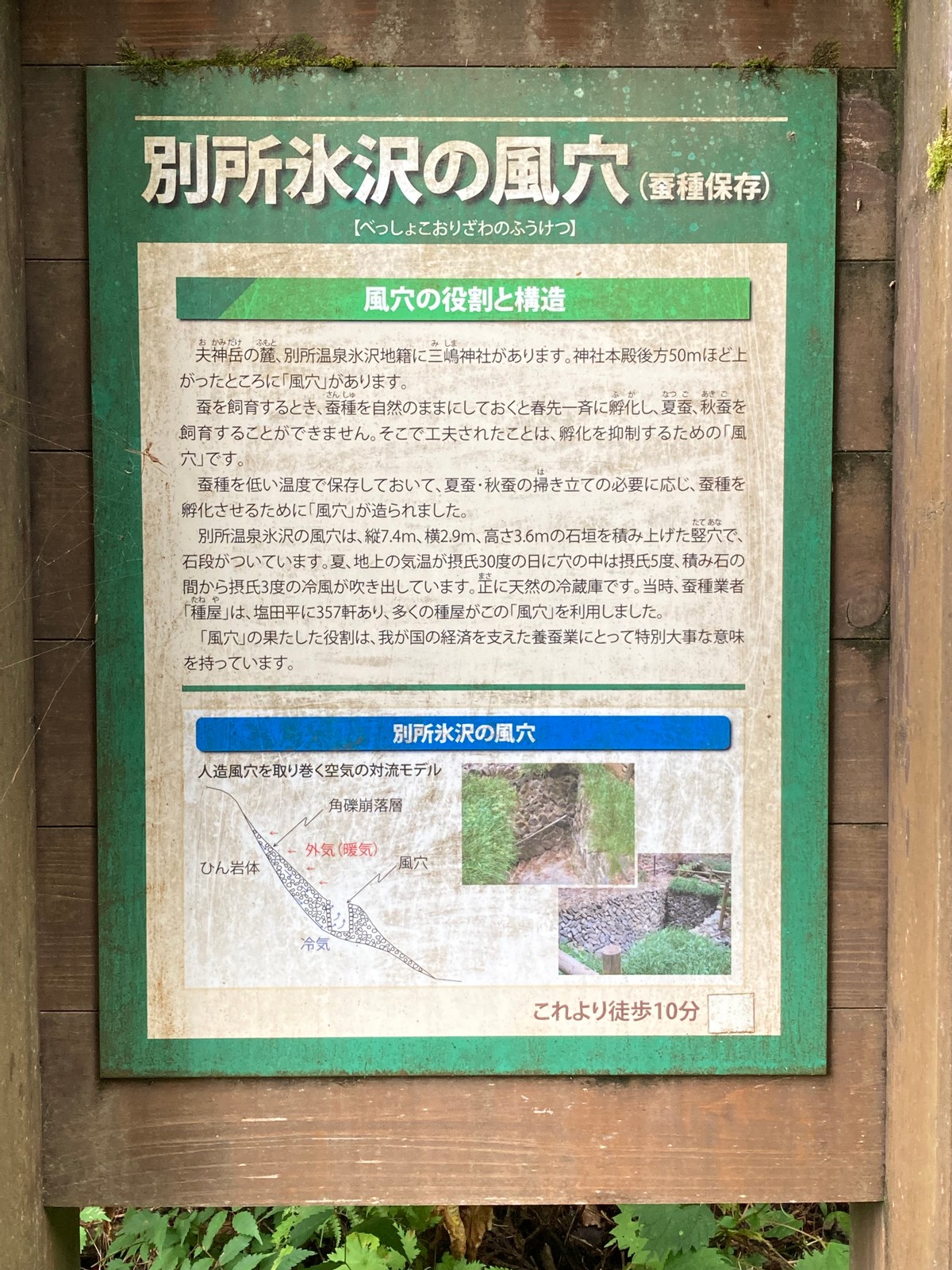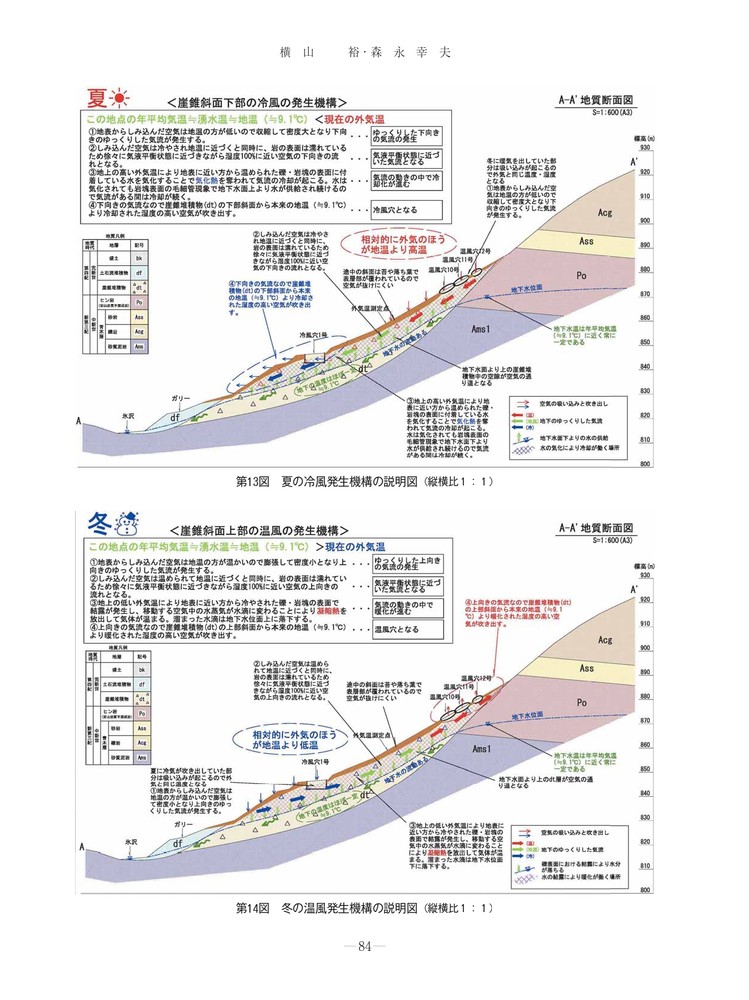
In this post, I'm going to write about what I found out about the Wind Cave online later on, as well as what I heard from Motoshima-san.
When was it created?
The oldest record of its existence is from 1871. However, it's considered to have existed for much longer, at least from the late 18th century.
Why was it created?
It was created and used for the purpose of keeping silkworm eggs cool. Although they usually hatch in the spring, cooling the eggs allowed people to control the hatching season and raise silkworms in the summer and fall.
Why is it so cold?
I read a few documents, including this one, but I don't really get why it's so cold. It's very difficult and only speculative for the time being. However, it appears that there's something really cold underneath, and geological features affect its temperature. Here's a page from a document illustrating the hypothesis.

The district around the Wind Cave, where the snow didn't melt even in May, has been called 氷沢 Kohri-Zawa (Ice Creek) since ancient time. There's no creek at ground level, but locals sensed the presence of an ice creek underground, I suppose. In the 18th century, they thought it could be used to keep silkworm eggs cool and thus built the Wind Cave. I also looked up a little shrine that's on the way to the Wind Cave, but wasn't able to find enough information about its background. I don't know which is older, the shrine or the cave, but it's easy to imagine they considered the phenomenon sacred. Without heavy machinery, it must've been difficult to construct the shrine and the Wind Cave; they had to carry and stack the large stones, one by one, on foot.
According to Motoshima-san, until about 50 years ago, an annual festival was held around the Wind Cave, and elderly locals remember eating live salamanders during the event. From our modern perspective, it's too risky given the possibility of parasites. However, people at that time had a humble view of nature, the courage to finish the difficult construction, and a thorough knowledge of the mountain. I really respect them.